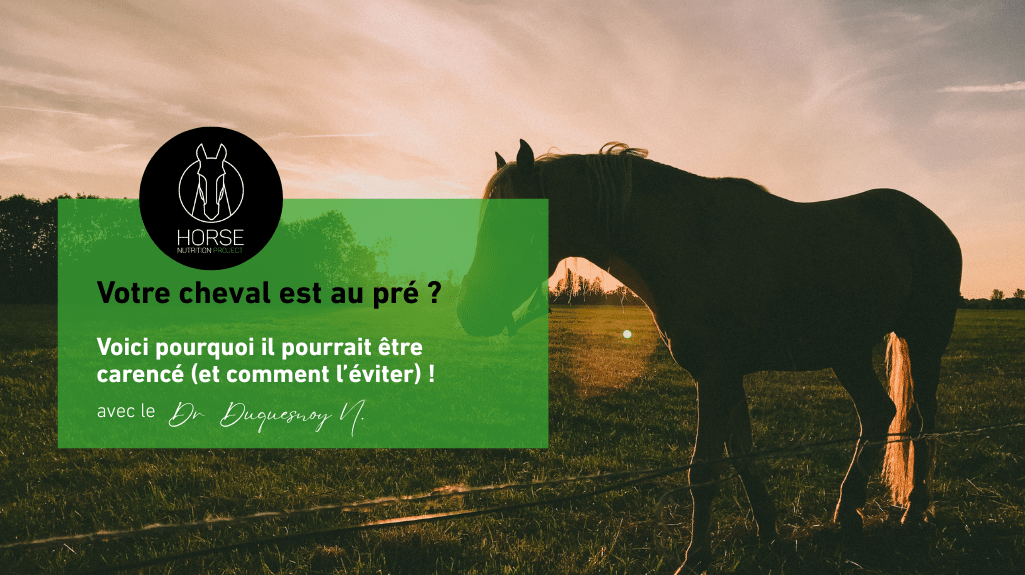About us
Is your horse in pasture? Here’s why he could be deficient (and how to avoid it)!
See our partners
Is your horse in pasture? Here’s why he could be deficient (and how to avoid it). Grazing is often seen as a natural and economical way of feeding horses during the summer months. However, grass is not always enough to cover all their nutritional needs.
Here are the main risks of deficiency for a horse in pasture and how to anticipate them!
1. Why might your pasture horse be deficient?
Grass is a variable resource, depending on the season, weather and floral composition. It guarantees neither quantity nor stable quality. A meadow that is poor or too heavily trampled can quickly lead to malnutrition in energy and protein, causing weight loss and muscle wasting.
2. Factors limiting grass intake
- Insufficient surface area available.
- Grass too short or too fibrous.
- Horse density too high.
- Limited outing time.
- Social behaviour (playing, resting, etc.) reducing grazing time.
Horses cannot compensate by grazing faster. Effective management practices must therefore be encouraged: winter resting of plots, mowing of refusals, rotational grazing and manure management.
3. Possible deficiencies in a pasture horse
- Vitamins (A, D3, E): generally covered if grass is abundant, but vitamin E is recommended for horses with specific needs (sport, reproduction, senior).
- Minerals: depends on the abundance of grasses and legumes. A lack of floral diversity leads to deficiencies.
- Trace elements (selenium, copper, zinc, etc.): seldom found in plants, their concentration depends heavily on the soil, which is often deficient in Europe.
4. How can deficiencies be avoided in grazing horses?
- Maintain uniform grass between 5 and 25cm.
- Monitor grassland flora, overseed or replant.
- Apply mineral supplements.
5. Our HNP solutions for pasture horses
- EquiBloc: a complete, simple and economical licking bucket, ideal for herd horses.
- Biovit and Equin croissance: cmv in pellets form, easy to distribute for small groups or horses with high needs.
Our team also includes agronomists specialising in grassland management.
Is your horse in pasture? Here’s why he could be deficient (and how to avoid it). Grazing is an excellent way of ensuring your horse’s comfort and well-being, as long as you remain vigilant about deficiencies. Anticipate, observe and supplement intelligently.
Need advice or suitable products? ✉️ Contact our HNP team for personalised support!
👉Find all the articles dedicated to horses that might interest you.
“When Nutrition and Care make the difference !”


